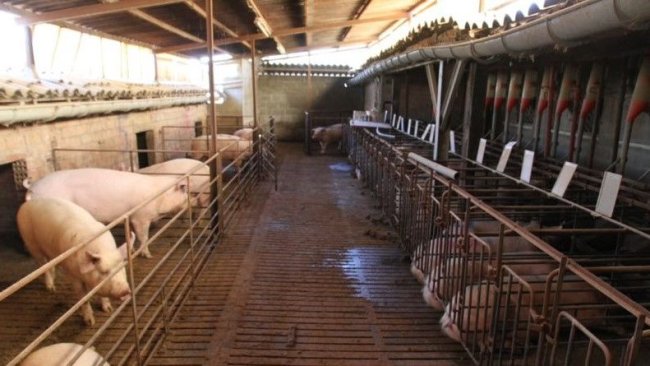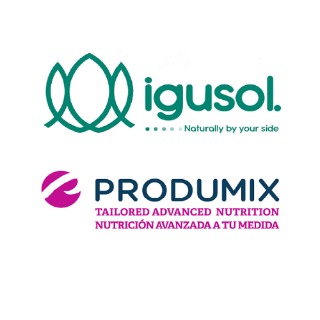
What should I do to make my PRRSV control program successful?
The end goal of any control program should always be to stop the virus from circulating in the sows in order to create a flow of negative growing pigs.
The pig sector events all around the world
Weekly newsletter with all the pig333.com updates
Swine industry news in your email
Pig health: news and articles on PRRS, PCV2, biosecurity, etc, Pig disease guide, atlas of pathology, clinical cases…
Biocheck.UGent is an independent, risk-based, scientific scoring system for assessing the quality of your on-farm biosecurity.
A visual and practical step-by-step guide on how to perform a necropsy on a pig.
All the information about ASF: how to recognize the disease, how it is transmitted, pictures of lesions, latest news, guides, etc.
All the information on Foot and Mouth Disease in pigs: how to recognize the disease, how it is transmitted, images of lesions, latest news, guides,...
Description of the most important diseases and conditions in pigs
Images of major swine diseases
Pig disease diagnostic tool
Definition for the most commonly used pig terms
Simulator that calculates the amount of drug to add to the water when using a flow dispenser.
Weekly newsletter with all the pig333.com updates
Pig Prices by countries. Pork production and trade. News of the pig market and the raw materials
The latest slaughter pig prices in the most important pig markets. Check the evolution of the historical prices in charts and in several currencies.
Latest quotations for the main commodities used in pig feed. Historical graphs with the pig price and estimated feed price.
Figures & trends in pig numbers, pork production and pork trade.
Global production and trade data for the most important raw materials
Weekly newsletter with all the pig333.com updates
Articles on nutrition and pig feeding, characteristics of raw materials and additives for pig feed. Prices of raw materials
Latest quotations for the main commodities used in pig feed. Historical graphs with the pig price and estimated feed price.
Technical sheets of the main raw materials and additives used in swine feed. They include a comparison of nutritional values from various sources, product
Global production and trade data for the most important raw materials
Definition for the most commonly used pig terms
Use this tool to diagnose problems with the feed conversion ratio. Click on the flowchart or on the buttons within the text to navigate through the different parts of the tool.
A biweekly newsletter with the latest developments in swine nutrition
Articles on genetics and pig reproduction: genetic improvement, genomics, artificial insemination, use of hormones
Compare production data, calculate the number of sow, nursery, and finishing spaces, and visualize your tasks on the work schedule by type of BMS.
Tool that allows you to calculate the replacement rate in your farm
Definition for the most commonly used pig terms
Use this tool to find out why your farrowing rate is less than ideal. Click on the flowchart or on the buttons found within the text to navigate through the different parts of the tool.
Weekly newsletter with all the pig333.com updates
Management, pig farm management, work planning in each production stage: management in gestation, grow finish, batch farrowing
Compare production data, calculate the number of sow, nursery, and finishing spaces, and visualize your tasks on the work schedule by type of BMS.
Tool that allows you to calculate the replacement rate in your farm
Definition for the most commonly used pig terms
Weekly newsletter with all the pig333.com updates
Design of facilities and equipment for pig farms: building design, climate control, feeding systems, etc.
Biocheck.UGent is an independent, risk-based, scientific scoring system for assessing the quality of your on-farm biosecurity.
Environmental Footprint Calculator along the pork value chain.
Definition for the most commonly used pig terms
Simulator that calculates the amount of drug to add to the water when using a flow dispenser.
Use this tool to explore which slurry management strategy best fits your situation. Click on the flow chart or on the buttons within the text to navigate through the different parts of the tool.
Weekly newsletter with all the pig333.com updates
What makes us stand out is the quality and independence of our contents. Find out about the authors who make it possible. Our goal is to generate a virtual community of advanced users in the sector.

Cinta Prieto obtained a degree in Veterinary Medicine from the Complutense University of Madrid (UCM) in 1992 and a PhD in Veterinary Medicine from the same university in 1997.
She has had different professional careers over the years. After obtaining her PhD, she worked as a veterinarian technician and as a production manager in several companies dedicated to pig production and also as a member of the technical swine services of an important pharmaceutical company. Finally, she returned to the Complutense University of Madrid, where she is currently a professor in the Department of Animal Health.
During her years at the university, her main professional work has been focused on research in the field of animal health and, specifically, on the study of porcine reproductive and respiratory syndrome virus, on which she began work during the completion of her doctoral thesis, shortly after the appearance of the disease. Over time, she has carried out studies on the pathogenesis of the disease in adult animals and studies on the safety and efficacy of both commercial and experimental vaccines against the disease. In recent years she has focused her work on studying the variability of the virus and its impact on virulence, immunogenicity and cross-protection between strains, with the ultimate goal of contributing to the development of safer and more effective vaccines against the disease using molecular tools.
At the university level, her work also includes participation in the teaching of undergraduate and graduate studies. At present, she teaches the subjects Infectious Diseases and Preventive Medicine, Health Policy, Zoonoses and Public Health for the Degree in Veterinary Medicine, as well as several Masters in which she deals with aspects related to virology and the production and health of pigs.
Finally, as of 2008, she is certified by the European College of Porcine Health Management.
Updated CV 09-Mar-2020

The end goal of any control program should always be to stop the virus from circulating in the sows in order to create a flow of negative growing pigs.

Thinking about successful monitoring, one should keep in mind the objectives, the production phase, and the type of animal to be tested.

Its high survivability in the environment, a long infective period, limited cross-protection, strains with different pathogenicity, and lateral infections make stabilization difficult.
Welcome to 333
Connect, share, and interact with the largest community of professionals in the swine industry.
Celebrating 196257Users on 333!
Sign upAlready a member?





